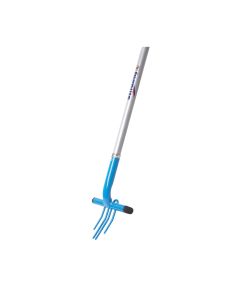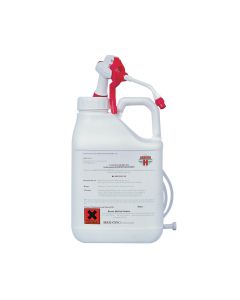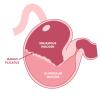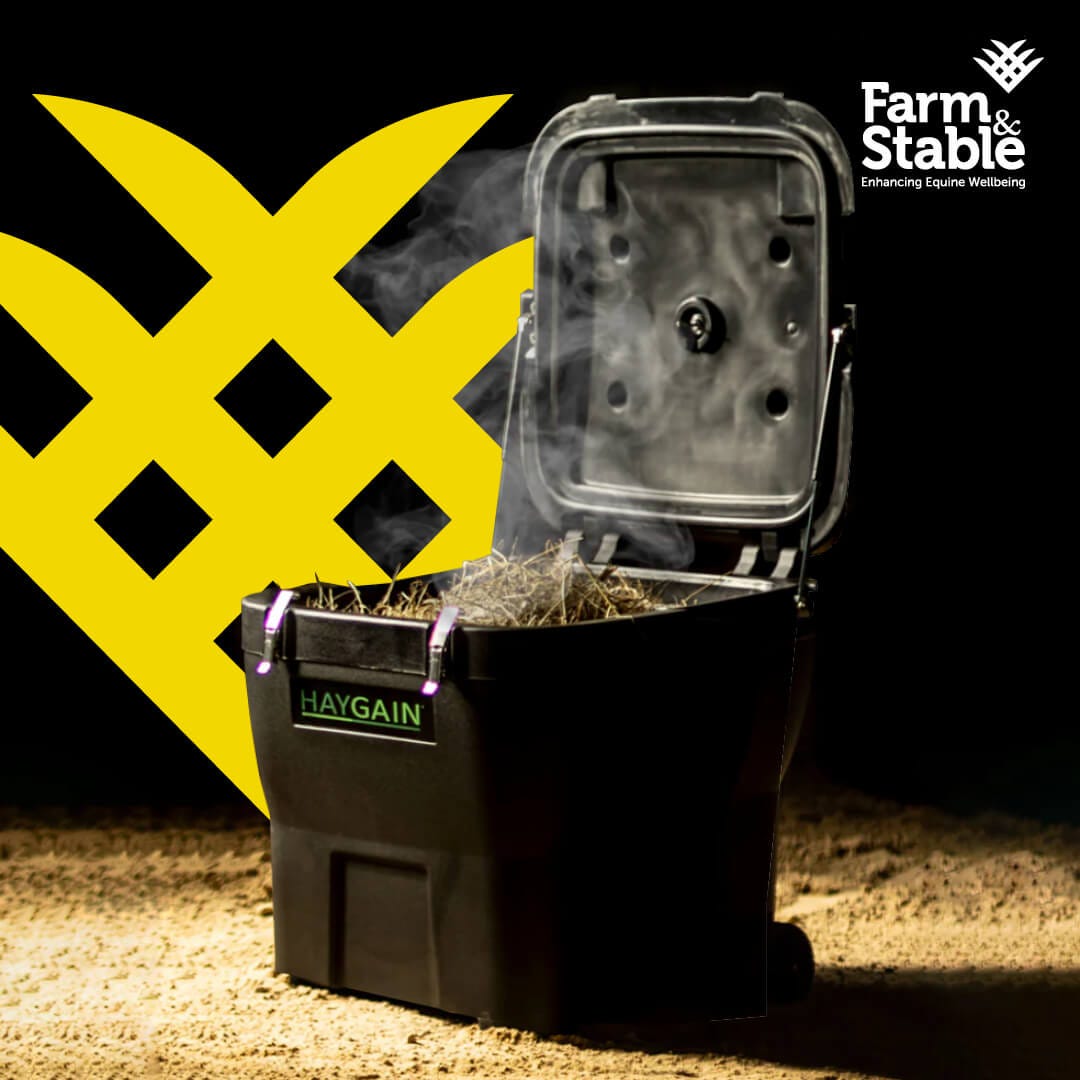Ragwort: Protect your horse against this poisonous plant

Like many wildflowers, ragwort is highly poisonous for horses, and it is rampant at this time of year. It is vital to prevent your horse from eating eat this plant as repeated consumption can cause irreparable internal damage. Ragwort contains pyrrolizidine alkaloids, toxins which cause scarring in the liver and can lead to complete liver failure. Both fresh and dried plants are poisonous, and the amount of plant required to cause serious harm is very small.
It is a common misconception that horses will avoid poisonous plants, and younger ragwort can taste less bitter, so it is possible for horses to consume ragwort without realising it.
Ragwort rosettes can be found from early spring onwards, but the plant is most identifiable when it flowers between May and October. The mature plant has yellow daisy like flowers and can grow up to 2 meters high.
One plant can produce many thousands of seeds which can be easily dispersed by the prevailing wind. They can also spread by water or by you and your animals, so it is best to remove the plant before it flowers.
Dealing with Ragwort
Though the plant is not deadly to humans, it is advised to wear protective gloves and cover arms and legs when handling to avoid any toxins being absorbed through the skin.
The easiest way to remove a small amount of ragwort is by pulling up the whole plant, including the roots. This is easier to do after rainfall as the ground is softer. It is essential to remove all of the roots as ragwort can regenerate from root fragments left in the soil. The Multi Weeda Rag (Ragwort) Fork is the ideal tool for this job.
If there is a widespread infestation, it is best to spray the paddock with a herbicide, but then the field must be rested for the recommend amount of time. Barrier H Ragwort Treatment is a natural herbicide that comes with a spray applicator. The spray is most effective at killing ragwort at the rosette stage.
Ragwort needs to be disposed of carefully as the dead plant is still poisonous. Ensure that all traces are removed before putting your horses back in the field.
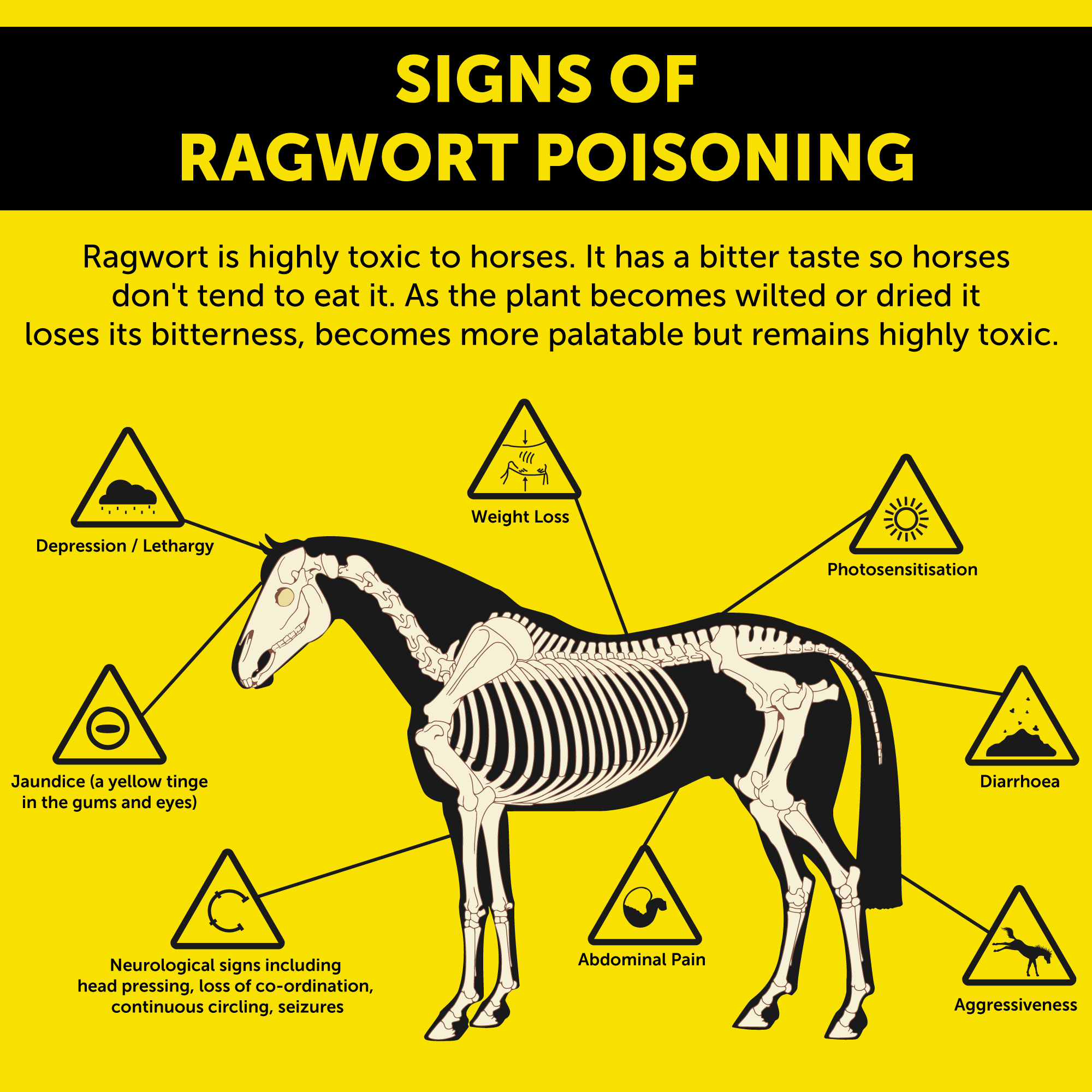
Signs of ragwort poisoning
If ingested, Ragwort will rapidly affect the liver of the horse. The signs of liver damage are non-specific but may include:
- Yellow discoloration of the gums or eyes (jaundice)
- Change in behaviour such as loss of appetite, pressing their head against the wall, circling, repeated yawning or persistent low mood
- Oedema (fluid retention in the legs and under the belly)
- Photosensitisation (pink skin can become red and blistered with normal levels of exposure to sunlight)
These side effects may be caused by the liver’s failure to detoxify the body.
Treatment
If you are worried that your horse may have consumed ragwort, please ensure you contact your vet immediately so treatment can be started quickly.
Ensuring that ragwort is removed from any turnout paddocks or around the yard is the best way to protect your horse from ragwort poisoning. Remove all traces of plants and keep an eye of neighbouring properties to avoid them spreading to your land.


 Forgotten your password?
Forgotten your password?  Free Delivery on all orders over £95+VAT
Free Delivery on all orders over £95+VAT
